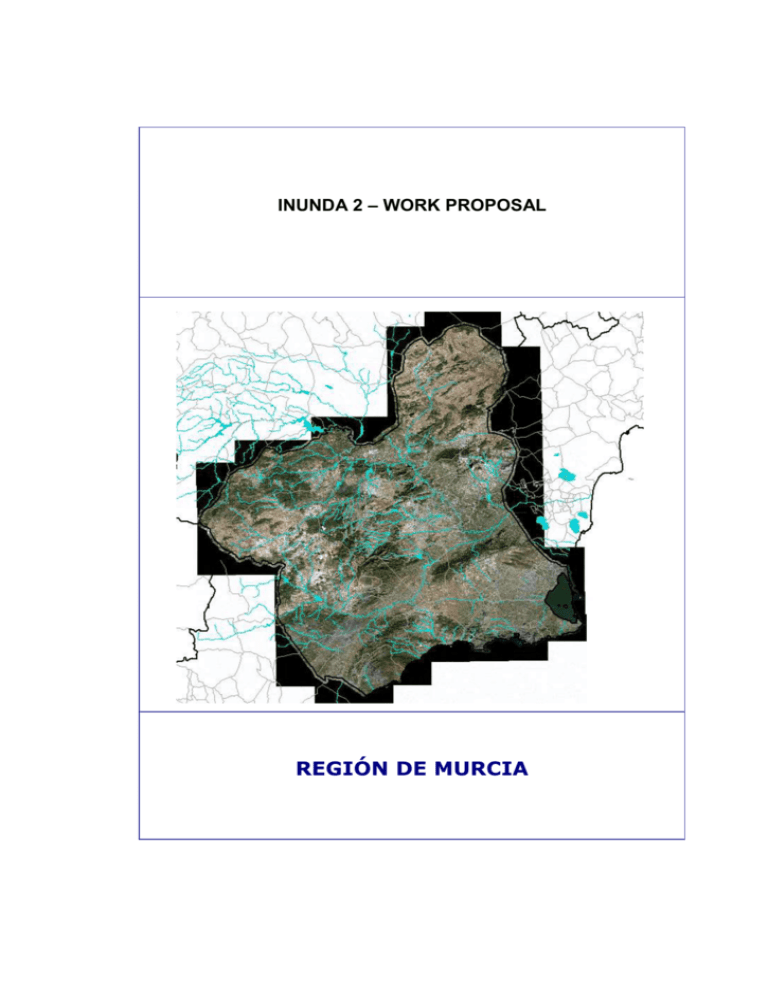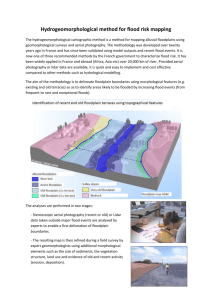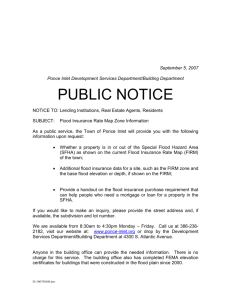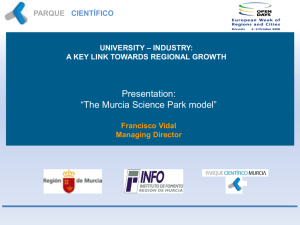4. climate change scenarios
advertisement

INUNDA 2 – WORK PROPOSAL REGIÓN DE MURCIA 1. INTRODUCTION As result of the Project INUNDA, within INTERREG IIIC SUD, the Region of Murcia drawn up a decree which order the content and the process of Flood’s studies needed to limit land bed’s protection. It was issued in the Official Gazette of Region of Murcia number 173 the 28/07/2007. This decree involves the Directorate-General for Spatial Planning to generate hydrology and hydraulic information that it should get to approve or reject flood´s studies. On the other hand, the DIRECTIVE 2007/60/CE OF THE EUROPEAN PARLIAMENT AND OF THE COPUNCIL means that Region of Murcia has to take into account in its decree the specifications about assessment and management of flood risks whose aim is to get a framework to reduce impacts on human health, the environment, cultural heritage and economic activity. One of the aspects that appears on the DIRECTIVE are the flood hazard maps and the impact of climate change risk, and in this point is where we want to focus our contribution to the project. 2. AIMS Development of tools which allow comparing the results got with the flood’s studies. For that we’ll establish an Hydrological Distribute Model to set, on a 500x500m scale, the flows associated to 25,50,100 and 500 years of return period. The final product will be a peak flood raster map with a 500m resolution. Create a data base and covering parameters within an GIS in order to standardize the inputs of the hydrological models. Maximum rainfall in 24 hours related to 2, 5, 10, 25, 50, 100, 200 and 500 years of return period having from National Weather Institute’s weather station with a 1 x 1 Km resolution. Runoff threshold regional map and number of curve with a 10x10 m resolution, from Directorate General’s Land Use and texture Maps,. Spread hydrologic parameters Climate Change Scenarios Application to the Hydrological Distribute Model in order to assess peak flows and frequency change. 3. THE PROPOSED HYDROLOGICAL MODEL It proposes using TOPKAPI (TOPographic Kinematic APproximation and Integration) to model the whole region. The TOPKAPI model has been developed by the group of Ezio Todini (University of Bologna). It is a physically based distributed rainfall-runoff model. The core of the model is the kinematic wave routing of flow in the horizontal direction in the soil and on the land surface (overland and channel flow) governed by surface topography and soil and land use properties. Flow in the soil is lumped in the vertical dimension. All parameters have a physical basis, however some parameters are effective parameters applied at the modeling resolution scale and may be adjusted (calibrated) to fit observations. The fully distributed nature of the model means that each grid cell of the DEM is assigned a value for each of the physical characteristics represented in the model. Flow directions, topographic slopes and individual flow paths are evaluated from the DEM. The TOPKAPI model version used here is structured around five modules which compute evapotranspiration, snowmelt, soil water, surface water and channel water routing. The soil water component is the defining aspect of the model because it regulates the functioning of the contributing saturated areas. The surface water component is activated on the basis of this mechanism. Both components contribute to feed the drainage network. Figura 1: Hydrological phenomenon simulated by TOPKAPI 3 Precipitación: - Radar - Pluviómetros - Satélite - Predicciónes meteorológicas Figura 2: Rainfall Distribution 4. CLIMATE CHANGE SCENARIOS It’s well-known that Mediterranean basins suffer from extreme events, warmer conditions over the Mediterranean region should lead to an increase in the occurrence of extremely high temperatures and a decrease in extremely low temperature events. Similarly, in areas experiencing a general decrease in precipitation, droughts are likely to become more frequent as the probability of dry days and the length of dry spells increases. The converse is true for areas where precipitation increases. The needed impact studies and climate change assessment risks are based on impact models which require climate dates. Although it is virtually impossible to provide generic guidance for the full range of climate change impacts assessments the Spanish Climate Change Office together with the National Weather Institute have developed the Climate Change Regional Scenarios for Spain which will show a broad range of future changes in the Spanish’s climate that we must face , finally these scenarios will give way a dataset for impacts assessment, in order to offer a range of Tools to help with climate change risk assessment and adaptation strategies. 4 DATES, REPORTS AND DOCUMENTS AVAILABLE FOR CLIMATE CHANGE IMPACT AND VULNERABILITY ASSESSEMENT To know flood risk in a future due climate change Region of Murcia will follow the next methodology: Implementation of a hydrological model according with the design conditions Implementation of the climate change scenarios with the corresponding Downscaling Impact assessment on flood maps and the frequency of apparition in flood areas, that is flood risk variation. 5









